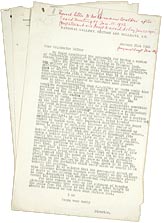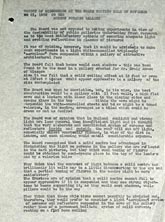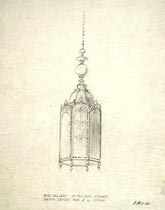|
A gallery for British art |
The site |
The architecture |
Extensions |
The restaurant |
Out of the shadows
Out of the shadows

When Tate first opened in 1897 visitors were turned out of the Gallery at 4 o'clock - or even earlier in the winter months and when the weather was foggy, because there was
not enough light to view the art work or for the attendants to sufficiently guard it.
There was no electric lighting in the building and the only light was that from the windows and skylights.
Although artificial lighting was introduced into the basement storage areas in 1903, and the extensions of 1910 and 1926 included electric lighting in their designs, the rest of
the gallery remained in the dark.
The delay in introducing electric lighting to the whole Gallery was in part due to the school of thought (endorsed by the Trustees of the National Gallery) which believed that
works of art should only be viewed by natural daylight. |

Discussion with Architects
regarding 'Scientific Lighting' in the new Modern
Foreign Gallery
© Tate Archive 2003 |

Report on lighting for the
Modern Foreign Gallery
© Tate Archive 2003 |

Rejected Chandelier Design
© Tate Archive 2003 |
In 1911 a new keeper, Charles Aitken, arrived at the Tate. He had a keen interest in social issues and was concerned because poorer visitors to the Gallery, who had to work
through the week and often on Saturday mornings, had to limit their visit to the brief slot before it got dark on a Saturday afternoon.
Aitken had come to the Tate from the Whitechapel Gallery which had electric lighting. He reasoned that as Tate was more popular amongst ordinary people than the National
Gallery, it should aim to meet the needs of its visitors by remaining open longer in the evenings, and should not be governed by the National Gallery Trustees' ruling on artificial
lighting.
However despite Aitken's efforts, it was not until the late 1920s that a commission was set up to look into the restricted opening hours of national museums.
It concluded that the National Gallery and Tate Gallery should introduce electrical lighting as a matter of priority.
Electric lighting was finally introduced throughout the Tate in 1935, enabling the Gallery to stay open until 5 pm - whatever the weather! |
|
